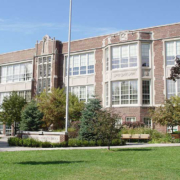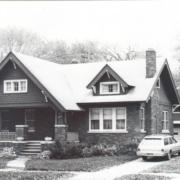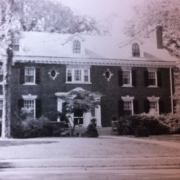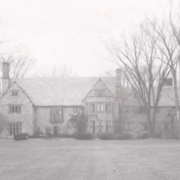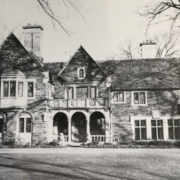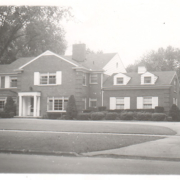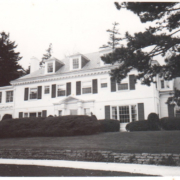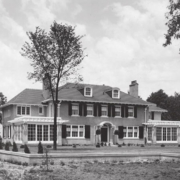Historical Architecture of Grosse Pointe – Welcome to the World of George J. Haas
We may be surrounded by a wealth of stunning residential architecture, however lets not forget the many wonderful municipal buildings that are located around Grosse Pointe. Buildings that have not only earned recognition from an architectural sense, but buildings that have been designed by some of the leading architects in their field – magnificent churches, the club houses, beautifully designed water filtration plants, and many superb schools
We recently covered the Grosse Pointe Academy and its rich history, but now we turn our attention to the oldest school building in use today in the Grosse Pointe Public School system – Defer Elementary School, Grosse Pointe Park.
During the first part of the 20th century Grosse Pointe was growing rapidly. The influx of families into the area resulted in the need for the five school districts to be amalgamated into one – originally named Rural agricultural District No.1 (later renamed as the Grosse Pointe Public School System). Several new schools were needed; the first to be constructed was Defer, closely followed by Grosse Pointe South.
Welcome to the world of architect George J. Haas!
Born in Detroit in 1890, Haas trained at the Detroit Technological Institute and resided in St Clair Shores. He had a wide and varied career, including working as a specification writer for Albert Kahn, President of the Michigan Society of Architects 1924-25, Secretary treasurer of Florida Association of Architects in 1945, along with receiving honors from the American Institute of Architects. Haas was also a very skilled architect, specializing in designing several municipal buildings on the East side of Metro Detroit, including –
- Grosse Pointe Park Municipal Building – 1919
- Defer Elementary School – 1924
- Grosse Pointe South – 1928
- Hamtramck High School – 1930
- Jefferson Beach Amusement Park Coliseum – 1930
- Macomb County Building – 1933
Defer Elementary School
The site for the Defer Elementary School was once a rhubarb patch, located on land belonging to Ludwig Meininger, a two-block wide strip of land running from what is now Chandler Park Drive in Detroit to Lake St. Clair. The family sold part of the farm, the rhubarb patch, to be developed as subdivisions.

Image courtesy of en.wikipedia.org/wiki/Defer_Elementary_School
Haas designed the new school in the Tudor Revival Style, a popular approach in Detroit and across the U.S. during the first quarter of the twentieth century. The three-story rectangular building was constructed of brick, with superb limestone detailing used to frame the doors and the many large windows, creating a striking contrast to the brick. Many of the exterior doors are wood paneled, encased by Gothic arches, a style that was very prominent in municipal buildings throughout Grosse Pointe during this era.
The interior of the school is flooded with light, courtesy of the large windows that make up the majority of the façade of the building. Several of the rooms are decorated with Pewabic tile; the kindergarten room features a Pewabic fireplace and drinking fountain. It is believed the construction of the new school cost around $244,000, which is roughly $3.3m today. The school was completed in 1924 and named after George Defer (1880 – 1927) who was a trustee of the Village of Grosse Pointe Park (1914-1917) and president of GPP from 1918 – 1926.*
Throughout the coming years the district of Grosse Pointe Park continued to grow rapidly, and by 1928 additional classrooms and a leaded glass conservatory were added to the school to help ease the overcrowding.
Shortly after completing his work at Defer Elementary School, Haas turned his attention to designing Grosse Pointe South – a story we will be exploring next week.
Defer Elementary School was listed as a designated Michigan Historical site in 1996 and listed on the National Register of Historic Places in 2001.
* Just before George Defer’s death in 1927, he was a newly elected Michigan State Senator.
** Research from Grosse Pointe Heritage Magazine, courtesy of Grosse Pointe Public Library Local History Archives.
Written by Katie Doelle
© 2015 Katie Doelle

